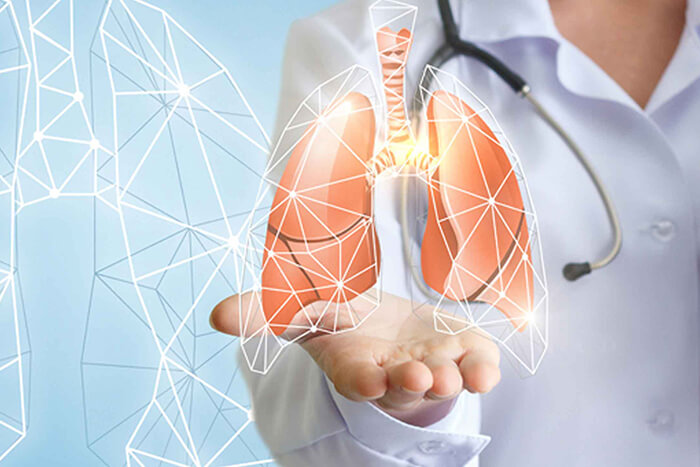Physiotherapy interventions are quite effective in the rehabilitation phase of treatment of various diseases, especially in diseases of the bronchopulmonary system.

The restorative problems of most respiratory diseases are: absorption of inflammatory foci, improvement of bronchial permeability, restoration of bronchial drainage function, even ventilation of the lungs, improvement of lung ventilation parameters, improvement of blood circulation, nutrition, strengthening, defibrillation.
“Vita Longa” Medical Center is equipped with the latest physiotherapy equipment, which allows the use of various physiotherapeutic methods, such as high-frequency current therapy, induction therapy, short-wave therapy, electrotherapy, low-intensity therapy, high-intensity therapy, high-intensity therapy, to achieve the desired result in the treatment of diseases of the respiratory system.
The choice of method depends on the disease and the degree of complexity. Thus, in the more acute period of bronchitis and pneumonia, high-frequency current therapy, inductothermia, short-wave therapy are performed.
The advantage of the high-frequency therapy equipment (BTL-6000 Shortwave 400, England) is the presence of a generated pulse mode, which allows to reduce non-specific heat effects during acute inflammation and enhance the specific effect of anti-inflammatory, bacterostatic, metabolic and nutrition-improving factors.
Induction therapy, short-wave therapy has anti-inflammatory, restorative effect, speeds up blood circulation, improves nutrition, stimulates local immunity, promotes the absorption of inflammatory foci.
Various methods of electrophoresis based on constant electric currents are widely used (BTL-4620 Premium, England) during the long course of pneumonia, bronchitis, bronchoconstriction, allergic component, hypersecretion. Constant currents are used to stimulate metabolic processes in the pathological site, to improve absorption, lymph and blood circulation, as well as to introduce drugs and to establish a drug store in the inflammatory site. The method can be used both locally, hearth, and completely. The drug — cation, iodine ions, heparin, enzymes, euphylline, magnesium, aloe, etc., is selected depending on the severity of the disease and the symptoms.
Medium-frequency currents during electrotherapy contribute to the long-term course of pneumonia, the absorption of inflammatory foci in chronic bronchitis, and the improvement of blood circulation and nutrition. The effectiveness of the intervention is further enhanced by the concomitant use of vacuum therapy.
In bronchospasm, pulsed currents are used in myostimulation mode, during the patient’s exhalation, promote the activation of drainage function, reduce hypersecretion, improve expiratory function. All this helps to clear the bronchial branches and reduces stagnation in the lungs. Electrical stimulation of the pelvic floor muscles during respiratory failure contributes to the regulation of lung ventilation, hemodynamics, gas metabolism.
Low-frequency magnetotherapy (BTL-4920 Premium, England) has anti-inflammatory effect, stimulates phagocytic protection, improves blood circulation and nutrition, can be used to reduce the acute processes of bronchopulmonary diseases, especially in weak patients who are contraindicated in high-frequency current therapy. Comfortable applicators allow to affect both local foci in the lungs and the entire bronchopulmonary system. For the desired therapeutic result it is necessary to pass the full course — 10 — 15 interventions.
Ultrasound therapy (BTL 4710 Smart, England) is used to improve blood circulation to the lungs, stimulate the esophagus, and prevent multiple sclerosis and pulmonary tissue sclerosis. The stimulant effect of ultrasound therapy during unstable remission and slow inflammatory process is manifested by complete absorption of peribronchial and perivascular infiltration. According to immunological research, the body’s sensitivity to bacterial allergens decreases, the level of complement, lysine, lysozyme increases in the blood, which indicates an increase in the body’s resistance. Drug ultrasound therapy (phonophoresis) intensifies the above-mentioned effects, drug storage occurs in the pathological center. In case of chronic respiratory diseases, ultrasound therapy is used in the rehabilitation period, after exacerbations, with preventive courses.
Laser therapy (infrared laser, HIRO 3.0 and MLS MPHI, ASA Laser, Italy) is used in the complex treatment of all diseases with a stable clinical picture, in combination with other physiotherapeutic interventions. It increases the resistance of cells to adverse factors, stimulates phagocytosis, activates the antioxidant system, improves microcirculation, increases the activity of fibroblasts.
16․06․2020
Physiotherapist: Koryun Vahanyan


